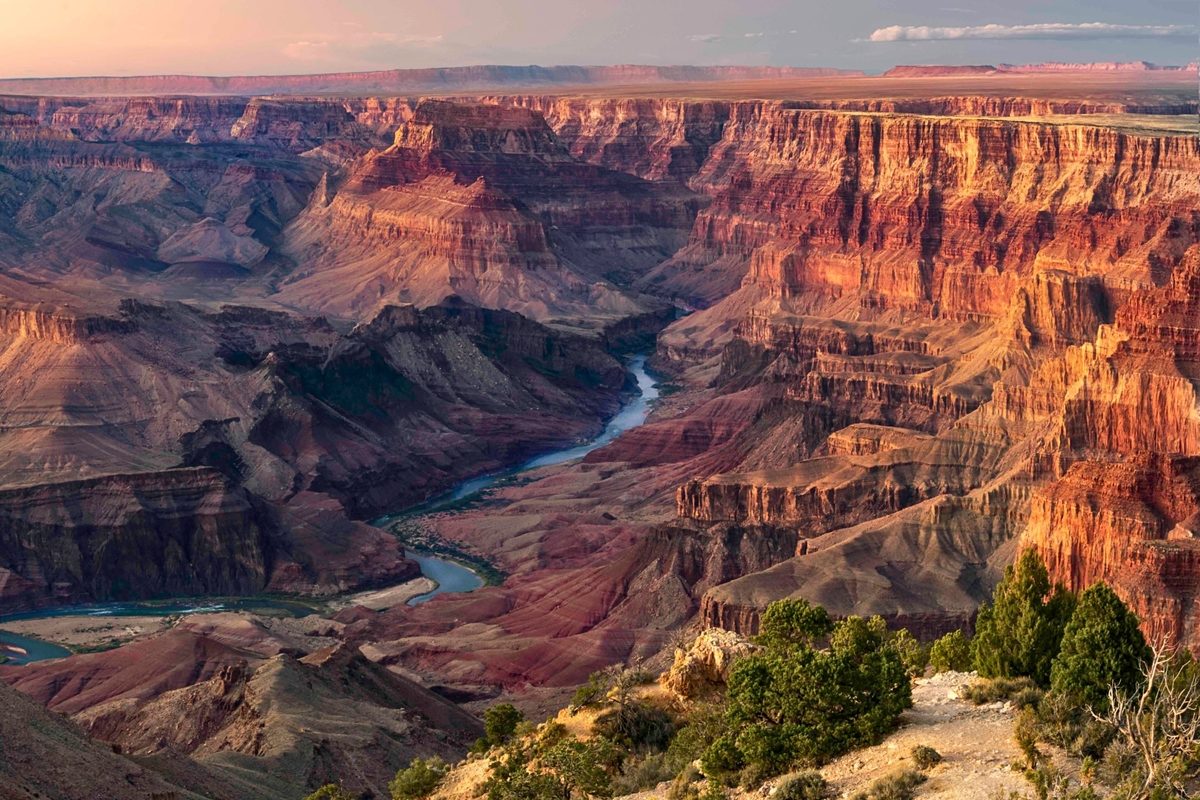
Expedition finds rare and exquisite trove of ancient animals deep in Grand Canyon
How did your country report this? Share your view in the comments.
Diverging Reports Breakdown
Expedition finds rare and exquisite trove of ancient animals deep in Grand Canyon
Fossils date back to a key moment in evolutionary history known as the Cambrian explosion, when most major animal groups first appeared. Discovery is the first of its kind from the famous canyon and includes exquisitely preserved remains of ancient animals such as rock-scraping molluscs, filter-feeding crustaceans and toothed worms. Researchers say the findings, published in the journal Science Advances, reveal new insights into the evolution of early life on Earth. The fossils were discovered during a 2023 expedition along the Colorado River, which has been gradually eroding the Grand Canyon for the past five to six million years.Finding soft tissue specimens is a rarity in the fossil record, which typically favours hard-shelled or mineralised creatures. This level of preservation is only known from a handful of sites around the world, such as Canada’s Burgess Shale and China’s Maotianshan Shales. The discovery fills a gap in the record but helps scientists understand how some of the earliest ecosystems on Earth were built.
The discovery is the first of its kind from the famous canyon and includes exquisitely preserved remains of ancient animals such as rock-scraping molluscs, filter-feeding crustaceans and toothed worms – as well as the food they likely consumed.
The fossils date back to a key moment in evolutionary history known as the Cambrian explosion, when most major animal groups first appeared.
Researchers say the findings, published in the journal Science Advances, reveal new insights into the evolution of early life on Earth.
The fossils were discovered in the Grand Canyon, a vast basin in Arizona carved out by the Colorado River. Credit Joe Clevenger
Into the Grand Canyon
The fossils were discovered during a 2023 expedition along the Colorado River. The 1,450-mile-long waterway (the 5th longest river in the USA) has been gradually eroding the Grand Canyon for the past five to six million years.
The team collected mud-rich rocks from the canyon’s walls, selecting layers thought likely to preserve delicate structures.
The fossilised animals found in the canyon are more than half a billion years old. Credit: Joe Clevenger
Under the microscope
The collected specimens were then taken to Cambridge in the UK, where researchers dissolved the rocks using hydrofluoric acid and examined the remains under high-powered microscopes.
Thousands of microfossils emerged, many showing astonishing anatomical detail. Although no complete animals were found, structures such as feeding limbs, teeth and body fragments provided enough evidence to classify them into groups.
Among the most remarkable finds were crustaceans similar to modern brine shrimp. These tiny creatures used hair-like limbs to sweep food into their mouths, which were lined with molar-like teeth and grooves to grind down particles. Plankton-like food can even be seen clustered near their mouths.
Image of teeth details viewed under a high-powered microscope. Credit Mussini et al
Other animals included molluscs with chains of teeth used to scrape algae from rocks, and a new species of priapulid, or penis worm, named Kraytdraco spectatus. This unusual worm had hundreds of complex branching teeth around its mouth, helping it capture food in the surrounding water. The name is a nod to the krayt dragon from Star Wars, chosen due to the creature’s exotic appearance and fierce-looking jaws.
Microscope image showing radulae – the tiny teeth found in molluscs. Credit Mussini et al.
“Surprisingly, we haven’t had much of a Cambrian fossil record of this kind from the Grand Canyon before,” says lead author Giovanni Mussini. “There have been finds of things like trilobites and biomineralised fragments, but not much in the way of soft-bodied creatures.”
Finding soft tissue specimens is a rarity in the fossil record, which typically favours hard-shelled or mineralised creatures. This level of preservation is only known from a handful of sites around the world, such as Canada’s Burgess Shale and China’s Maotianshan Shales, making the Grand Canyon discovery even more significant.
‘Goldilocks zone’
“These rare fossils give us a fuller picture of what life was like during the Cambrian period,” says Mussini, explaining that they suggest a rich, competitive ecosystem, where early animals experimented with different feeding strategies.
The Grand Canyon during the Cambrian was a shallow, equatorial sea – an ideal ‘Goldilocks zone’ where oxygen and nutrients were plentiful and wave damage was minimal. These optimal conditions, the researchers suggest, allowed evolutionary innovation to flourish. Animals could afford to develop complex traits, such as intricate feeding appendages and sensory organs, giving them an edge in the struggle for survival.
“Animals needed to keep ahead of the competition through complex, costly innovations, but the environment allowed them to do that,” says Mussini. “It’s got certain parallels with economics: invest and take risks in times of abundance; save and be conservative in times of scarcity.”
The discovery not only fills a gap in the fossil record but helps scientists understand how some of the earliest ecosystems on Earth were built, concludes Mussini.
Photo of the Colorado River taken during the expedition. Credit Jason Muhlbauer
Find out more about the study: Evolutionary escalation in an exceptionally preserved Cambrian biota from the Grand Canyon (Arizona, USA)
Top image: Grand Canyon. Credit: Getty
More amazing wildlife stories from around the world
Source: https://www.discoverwildlife.com/prehistoric-life/cambrian-fossils-grand-canyon
